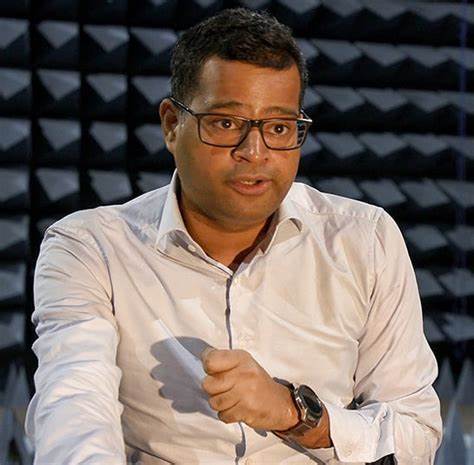about me

I am an Assistant Professor in the School of Computing at the National University of Singapore.
I lead the Wireless, Embedded Intelligence, Sensing and Emerging Technologies (WEISER) group.
We are interested in embedded systems. We engineer systems, which are commonly at the intersection of electronics, communication, computer science and aritifical intelligence.
students
- Gold Medalist (Rank 1) at University of Jaffna, Sri Lanka
- IEEE SA Telehealth Virtual Pitch Competition Winner [Contributions Featured on IEEE Spectrum and other outlets]
- Summer internship at Nokia Bell Labs, Cambridge [2024]
- Previously: a Digital Design Engineer at Texas Instruments and Early graduation from IIIT-Hyderabad [UG and PG]
- Gold Medalist (Rank 1) at University of Bombay (VJTI)
- Previously: Internships at EPFL
research
We enjoy building systems. This involves embedded platform design, programming, networking, and real-world deployments of embedded systems. The required skill set ranges from chip fabrication and programming microcontrollers to developing networking and wireless protocols, distributed computing concepts, machine learning frameworks, and prototyping applications for various scenarios.
Our work is interdisciplinary, and we welcome students from diverse technical backgrounds (EE,ECE,CSE, Physics, etc).
Research directions:
Tunnel Diodes: They are exotic and now commercially obsolete semiconductor devices operating at voltages (tens of millivolts) much lower than the sub-threshold limit of transistors. Tunnel diodes have a number of fascinating characteristics, including demonstrating negative resistance at low power consumption due to the quantum mechanical effect. We are designing beyond-transistor systems that use tunnel diodes to enable sustainable embedded systems operating in conditions difficult for today's transistor-based electronics. For example, this includes operations on minuscule amounts of energy harvested from the environment below the so-called cold-start voltage of harvesters, which is approximately 200 mV as dictated by limits imposed by Swanson and Meindl in 1972.
We have designed energy-efficient sensors that track light conditions and relay LiFi transmissions over radio waves [HotMobile 2023] , a low-power breathing rate sensor [RFID 2024] , beyond-backscatter transmitters [MobiSys 2022] [EnsSys 2023] , and enhanced the range of conventional backscatter mechanisms by replacing transistors based switches with tunnel diodes[MobiCom 2019] [MobiCom 2020].
Embedded systems with stochastic parrots: We design embedded systems that leverage the capabilities of stochastic parrots, like language and image models. OTTER is a system that analyzes sensor data by leveraging large language models [MobiCom 2023, Short-paper, and (Student Research Competition Third Winner (UG))]. Another effort, VoCopilot, has focused on designing a low-power tracker for monitoring vocal interactions [Arxiv]. Finally, through the design of PixelGen, we are rethinking the architecture of embedded cameras [Arxiv], applied to scenarios like mixed-reality headsets (IPSN 2024 Best Demonstration Runner-up) .
Beyond Radio Frequency: We devise beyond conventional mechanisms for wireless communications in embedded systems. The need for these mechanisms is motivated by the energy challenges of conventional radio frequency-based mechanisms and the constraints of operating on a shared radio spectrum with an ever-increasing number of wireless devices. In particular, we have explored the use of Li-Fi (or visible light communication) [VLCS 2016] [HotNets 2018] [MobiSys 2020] [TON 2023]. More recently, we started efforts to use non-standard parts of the spectrum for embedded systems communications like FM broadcast [EnsSys 2023].
In the past, I have worked on:
Backscatter transmitters: I worked on designing energy-efficient wireless transmitters based on the backscatter mechanism. They overturned the notion that backscatter is a short-range mechanism while also tackling the reader cost challenges of the conventional (and widely deployed) RFID-based backscatter systems [SenSys 2017]. I also worked on designing a novel class of embedded platforms sans computational elements, enabling the design of a low-powered battery-free light sensor leveraging the backscatter mechanism [VLCS 2017 (Best Paper Award)] (MOBICOM 2017 (SRC) Winner), a battery-free radio tomographic imaging system (Best Demonstration at WiSec 2018) , and exploiting low-power oscillator jitter for fingerprinting of the backscatter tags [HotNets 2021].
Electronically steerable directional antennas: I started my doctoral studies by exploring electronically steerable directional antennas called SPIDA. I designed one of the world's first such testbeds for wireless embedded systems. I developed a bulk forwarding protocol achieving the highest goodput over 802.15.4 links [SenSys 2015]. Another work, jointly done with CSIRO (Australia), UNSW (Australia), and the University of Utah, demonstrated device-free localization using radio tomographic imaging [IPSN 2015].
activities
I served or have previously served on the technical program committees of the following conferences: INFOCOM 2025, IMC 2024, SENSYS 2024, EWSN 2024, INFOCOM 2024, SENSYS 2023, INFOCOM 2023, IoTDI 2023, INFOCOM 2022, ICDCS 2021, INFOCOM 2021, ICDCS 2019, IoTDI 2019
I was also involved in the organization of the following scientific events: IPSN 2019 Posters, co-chair with Prof. Nirupama Bulusu (Portaland State University)), IPSN 2019 (PhD forum panelist with Prof. Anthony Rowe (CMU) and Prof. Olga Saukh (Graz)), SECON 2020 (Publicity chair), INFOCOM 2022(Session Chair), MOBICOM 2023 (Webchair)
history
Before joining National University of Singapore, I was a Postdoctoral Scholar at the Department of Electrical Engineering and Computer Sciences of the University of California, Berkeley. I was affiliated with the Lab11 , and mentored by Prof. Prabal Dutta. My training was funded through endowment of 2019 ABB Research Award in Honor of Hubertus von Grünberg.
Even before, I was a doctoral student at the Department of Information Technology of the Uppsala University, Sweden (Est in 1477!). My doctoral dissertation tackled the challenges of enabling sustainable deployment of embedded systems. In particular, through design of energy-efficient radio transmitters. Ever before, I was (briefly) a software engineer at NXP Semiconductors working on ZigBee protocol stack.
funding
My research is/has been funded through grants from government (Swedish Innovation Agency, Vetenskapradet (Sweden), Ministry of Education (Singapore)), funding from the university (ODPRT, ARTIC) and through grants and unrestricted gifts from Industry (NCS, Google, and ABB).